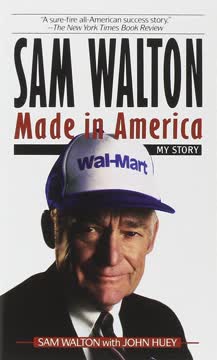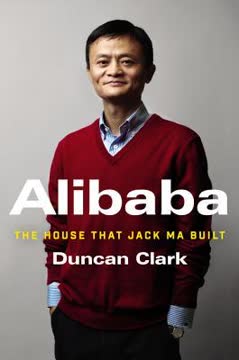Key Takeaways
1. Dream Big and Believe in Your Vision
If you can dream it, you can do it.
Envision the future. The idea for salesforce.com emerged from a dream: business software as easy as Amazon.com, delivered over the internet. This vision challenged the entire enterprise software industry model, which was expensive, complex, and difficult to use. Believing passionately in this "End of Software" revolution was crucial.
Overcoming skepticism. Pursuing a big dream means facing doubters, even from within your own team or industry. Early developers questioned the online CRM concept, and venture capitalists initially passed on funding. Remaining calm, articulating the vision clearly, and defending it with conviction were essential to moving forward.
Taking calculated risks. Turning a dream into reality requires significant personal and financial commitment. Leaving a secure job at Oracle and self-financing the early stages demonstrated belief. Surrounding yourself with a trusted few who share the vision helps validate the idea and provides crucial support.
2. Defy Convention and Differentiate Relentlessly
Don’t be afraid to ignore rules of your industry that have become obsolete or that defy common sense.
Challenge the status quo. The traditional software industry was built on expensive licenses, complex installations, and long implementation times. Salesforce.com defied this by offering a simple, subscription-based service delivered instantly over the internet. This contrarian approach was a core differentiator.
Bold marketing tactics. To cut through the noise, salesforce.com embraced unconventional marketing. The "NO SOFTWARE" logo and fighter jet ads directly attacked the established model and market leader, Siebel. This audacious branding positioned the company as a revolutionary underdog.
Creating a persona. The founder adopted the role of a revolutionary, wearing army fatigues at the launch party and embodying the fight against traditional software. This persona, while authentic, helped make the company's mission memorable and attracted attention from the press and public.
3. Turn Events into Powerful Marketing Platforms
The event is the message.
Build buzz and business. Events were central to salesforce.com's marketing strategy from the start. The launch party wasn't just a celebration; it was a theatrical demonstration of the "End of Software" message, designed to generate excitement and press coverage.
Foster word-of-mouth. Events like City Tours and Club Events brought customers and prospects together. By allowing customers to share their success stories directly, the company leveraged powerful, unbiased testimony. This created a viral effect and built a community of evangelists.
Leverage competitor activity. Salesforce.com strategically used competitor events as platforms for its own messaging. Mock protests outside Siebel conferences and renting taxis at their European event turned their visibility into opportunities to promote the "End of Software" and attract attendees to salesforce.com events.
4. Make Customer Success Your Core Business
If we took our customers’ view—and figured out how to make them successful—we would be profitable.
Focus on the end user. Unlike traditional enterprise software companies that targeted IT executives, salesforce.com focused on the people who actually used the software: sales, marketing, and service teams. This approach ensured the product met real-world needs and built user loyalty.
Listen and respond. Customer feedback was integral to product development from the earliest prototype days. The "Laboratory" welcomed users for testing, and later tools like IdeaExchange allowed customers to directly influence the product roadmap. This constant feedback loop drove innovation.
Customer success drives growth. The subscription model meant customer retention was paramount. A dedicated Customer Success Management team actively worked to ensure users were successful, leading to high renewal rates. Happy customers became the most effective sales force, providing testimonials and referrals.
5. Build Technology for the Cloud, Designed for Scale
We had to build it from the ground up for the Internet.
Multitenancy architecture. The core technology was built as a single, shared system (like an apartment building) from day one. This multitenant model allowed for efficiency, shared resources, and continuous, automatic upgrades for all customers simultaneously, unlike the burdensome client-server model.
Prioritize speed, simplicity, and correctness. The development team's guiding principles were "do it fast, simple, and right the first time." This focus on efficient, minimal code was crucial for performance and scalability. Building a strong foundation early prevented later "success disasters."
Leverage existing components. Instead of building everything from scratch, salesforce.com built upon established technologies like Java and the Oracle database. This allowed the team to focus on the innovative aspects of the service delivery model rather than reinventing fundamental infrastructure.
6. Empower Users to Drive Innovation and Build an Ecosystem
IdeaExchange became our secret weapon for innovation.
User-driven customization. Initially, customers requested simple changes like renaming tabs. This led to the revolutionary idea of allowing users to customize fields, objects, and workflows without code, enabling them to build mini-applications tailored to their specific needs.
Become a platform. Recognizing the demand for more applications and the limitations of building everything internally, salesforce.com evolved into a Platform-as-a-Service (Force.com). This allowed external developers to build and run any business application on the salesforce.com infrastructure.
Create a marketplace. The AppExchange provided a central hub for developers to distribute their applications and for customers to discover, test, and purchase them. This marketplace fostered a vibrant ecosystem, extending the platform's capabilities and increasing customer stickiness.
7. Integrate Philanthropy into Your Business DNA
The business of business is more than business.
Commit from the start. Inspired by personal experience and the America's Promise initiative, the founders decided to integrate philanthropy from day one. The Salesforce Foundation was established concurrently with the company, seeded with equity.
The 1-1-1 model. This unique model committed 1% of equity, 1% of employee time, and 1% of product to charitable causes. This ensured philanthropy grew with the company and leveraged all its assets—financial, human, and technological—for social good.
Employee-driven impact. The foundation's initiatives, such as technology centers, youth media programs, and environmental efforts, were often inspired and led by employees. This fostered a culture of caring, increased employee engagement and loyalty, and amplified the company's positive impact on communities.
8. Expand Globally with Local Expertise and Commitment
Follow Strategy, Not Opportunity.
Build global capabilities early. The product was designed from the outset to support multiple languages and currencies, anticipating international expansion. This foresight made entering new markets technically feasible.
Sequential growth strategy. Rather than expanding everywhere at once, salesforce.com adopted a phased approach. They established beachheads in key regions (Europe, Japan, Australia), often starting with corporate sales and gradually building field teams and local offices as demand grew.
Leverage local leaders and adapt tactics. Hiring local executives and missionaries was crucial for navigating cultural nuances and business practices. While the core model remained consistent, tactics were adapted (e.g., sales approaches in Japan, marketing stunts in Singapore) to resonate with local markets. Demonstrating long-term commitment was key to building trust.
9. Manage Finances Conservatively, Plan for Long-Term Growth
It doesn’t make sense to plan for the company you are. You have to plan for the company you want to be.
Underestimate needs, seek alternatives. The company initially underestimated its capital needs due to the subscription model. Rejection from traditional VCs led to raising funds from a network of friends, family, and angel investors who believed in the vision.
Evolve the financial model. The initial month-to-month payment model proved financially challenging. Shifting to annual contracts and a deferred revenue model significantly improved cash flow and provided stability, becoming a standard for the SaaS industry.
Prioritize revenue and compliance. In a high-growth phase, the focus was on revenue growth and market share over immediate profitability. Building a first-class finance team and implementing rigorous processes for revenue recognition and IPO compliance were critical for demonstrating stability and attracting public investors.
10. Align Your Organization with a Clear, Shared Framework (V2MOM)
Essentially, V2MOM is an exercise in awareness in which the result is total alignment.
Need for clarity. Growing rapidly without a clear plan or communication process was a challenge at Oracle. This experience led to the development of V2MOM (Vision, Values, Methods, Obstacles, Measures) at salesforce.com.
A living document. The V2MOM is a dynamic framework, updated regularly and shared throughout the organization. It defines goals, priorities, and how success will be measured, providing a roadmap for everyone.
Top-down and bottom-up. The V2MOM process involves leadership setting the initial framework, followed by input and iteration from managers and employees. Using internal tools like IdeaExchange and Peopleforce ensures broad participation and alignment across all levels and departments.
11. Build a Recruiting Culture: Hire and Retain Top Talent
Pursue Top Talent as If Your Success Depended on It.
Recruiting is the engine. Acquiring the right talent is paramount for growth and distribution capacity. Hiring a dedicated HR person early signaled the importance of building a strong team.
Apply sales strategies to hiring. Recruiting is treated like sales, focusing on building a pipeline of candidates, leveraging networks (employees, board members), and crafting compelling pitches tailored to individual motivations (innovation, opportunity, culture).
Maintain high standards and foster loyalty. A rigorous, multi-stage interview process ensures a strong cultural fit. Retaining top talent involves providing new challenges, recognizing contributions (Mahalo), and supporting employees through personal challenges, building deep loyalty beyond compensation.
Last updated:
Review Summary
Behind the Cloud receives mixed reviews, with praise for its insights into Salesforce's history and SaaS industry development. Readers appreciate Benioff's philanthropic initiatives and marketing strategies. However, some criticize the book's arrogant tone and lack of depth in addressing challenges. Many find the advice valuable for entrepreneurs, while others see it as basic or outdated. The book's structure of "plays" is both praised for its clarity and criticized for its disconnected nature. Overall, it's considered informative but potentially self-congratulatory.
Similar Books










Download PDF
Download EPUB
.epub digital book format is ideal for reading ebooks on phones, tablets, and e-readers.






